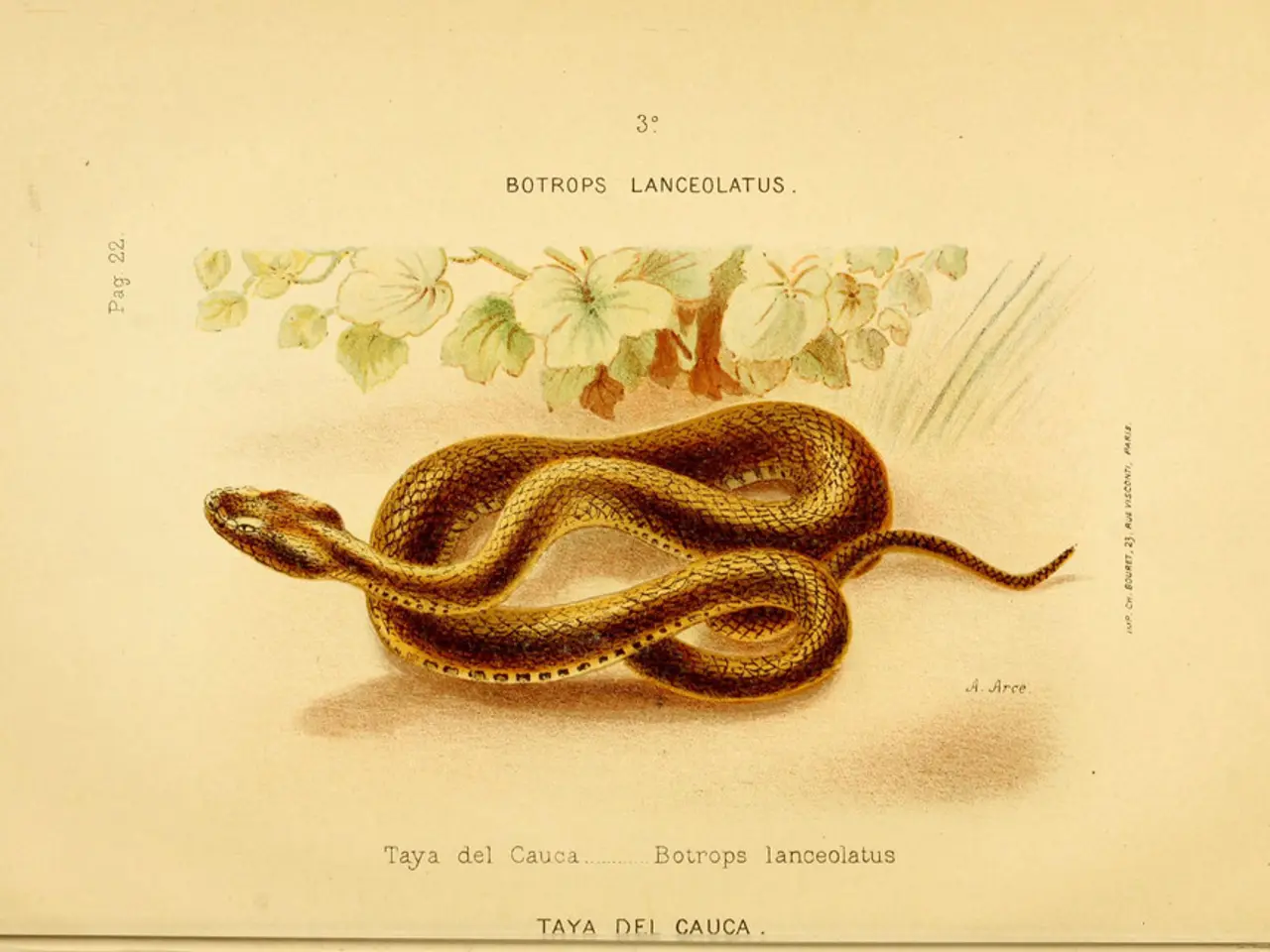Indigo snake in Mission, Texas, feigns death upon approach. Although indigo snakes typically don't exhibit this behavior, pretending to be deceased is not unheard of among various snake species. Follow this link for further information...
In an intriguing discovery, a Texas indigo snake has been observed exhibiting the rare behaviour of death-feigning, mimicking death to avoid predation. This behaviour, while not commonly documented in Texas indigo snakes or related species, is observed in some other snake species such as the hognose snakes and water snakes.
Implications for Predator Deterrence
The death-feigning behaviour can be an effective defense mechanism against predators. By appearing dead, the snake may deter or confuse potential predators, allowing it to escape. Additionally, most predators tend to avoid eating dead animals due to the risk of disease transmission, thus conserving energy that would be spent fleeing or fighting.
Implications for Snake Conservation
This observation could have significant implications for snake conservation. Misidentification of snakes as dead could potentially affect population surveys and conservation efforts. Understanding death-feigning behaviour can provide insights into snake behaviour and ecology, which can inform conservation strategies by highlighting the importance of habitat preservation and reducing human-snake conflicts.
Educating the public about snake behaviour can help in reducing fear and promoting coexistence with snakes, thus supporting conservation efforts. New reports of snake death-feigning are frequently added to the scientific literature, and species as varied as opossums, red flour beetles, and mallard ducks also play dead as a strategy to deter predators.
A New Discovery
Eric Johnson, an amateur herpetologist from Mission, Texas, filmed the video of the Texas indigo snake playing dead. Johnson's tangle with the Texas indigo snake is bearing scientific fruit, as he is working with Texas State University doctoral student Mayra Oyervides to publish his observations in the scientific literature.
The snake in the video, confirmed by herpetologist Toby Hibbitts of Texas A&M University, is a Texas indigo snake. The performance of playing dead is somewhat subdued compared to other snakes like the hognose snake and grass snake.
While it is exciting to witness such a rare behaviour, it is essential to remember that touching wild snakes, even the harmless Texas indigo snake, is not advisable. It can be stressful for the snake and uses valuable energy. Venomous or not, it's never advisable to touch wild snakes due to potential harm.
Johnson has had his fair share of encounters with venomous snakes, having been bitten eight times and facing near-lethal allergic reactions. However, this hasn't deterred him from his passion for reptile observation, as he hopes to make a contribution to the professional herpetological community along the way.
This discovery adds to the growing body of knowledge about snake behaviour and highlights the importance of continued research and conservation efforts. The Texas indigo snake, a threatened species under Texas state law, deserves our attention and protection.
- Understanding death-feigning behavior in Texas indigo snakes could provide insights into wildlife conservation, as it may help in reducing misidentification in population surveys, informing conservation strategies, and promoting coexistence with snakes.
- Public education on snake behavior, including death-feigning, is crucial in reducing fear and promoting a lifestyle that supports conservation efforts for various species, such as the Texas indigo snake.
- In environmental-science, new discoveries like the death-feigning behavior in the Texas indigo snake contribute to the growing body of knowledge, which can help in wildlife conservation, habitat preservation, and reducing human-snake conflicts.
- Sportsmanship in the field of environmental-science is evident through Eric Johnson's passion for reptile observation, despite facing danger from venomous snakes, as he aims to make a contribution to the professional herpetological community.
- The community can support conservation efforts by admiring wildlife, such as the Texas indigo snake, from a distance, avoiding interaction, and reporting rare behaviors to environmental-science professionals, as observed by Eric Johnson in his video.








